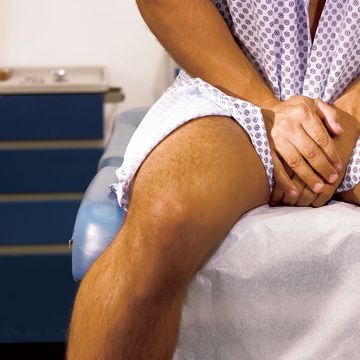You may have noticed a recent wave of headlines suggesting that flossing is overrated.
The news stems from an Associated Press article entitled: “Medical benefits of dental floss unproven.”
The article suggests that many of the studies that back flossing are too small, too short term, inconsistent, or otherwise unreliable.
This isn’t the first time the benefits of flossing have been called into question.
Just last year, a Daily Mail article set off a similar wave of headlines after it proclaimed that “Flossing is a waste of time!”
The Daily Mail article said that a review in the Journal of Clinical Periodontology found no evidence that cleaning between your teeth helps fight gum disease.
Related: The Men’s Health Better Man Project—2,000+ Quick Tricks For Living Your Healthiest Life
But here’s what the review actually concluded: “All investigated devices for inter-dental self-care seem to support the management of gingivitis.”
To be fair, the evidence on the effectiveness of flossing is mixed: Some prior studies found little evidence that flossing makes a difference in oral health, but others studies suggest that it significantly reduces gingivitis.
Even the American Academy of Periodontology acknowledges that the research is weak. In a statement released yesterday, the group said that because gum disease progresses so slowly, studies should be conducted over a period of many years—and most of the research out there so far doesn’t track people for that long.
But even if the evidence is weak, that doesn’t mean flossing is totally pointless.
The three leading dental experts we polled when this news circulated last year agreed: Yes, you should clean between your teeth.
It’s one of the most important things you can do to keep your mouth healthy, says Joan Otomo-Corgel, D.D.S., the former president of the American Academy of Periodontology and a professor at the UCLA School of Dentistry.
Related: 9 Surprising Ways to Whiten Your Teeth.
That’s because your toothbrush bristles can’t reach the tight spaces between your pearly whites. Plaque—a film of bacteria—builds up there.
Those germs generate acid, which irritates your gums and can lead to gum disease, says Dr. Otomo-Corgel.
(When gum disease progresses, your teeth can actually become loose, says Men’s Health dentistry advisor Mark Wolff, D.D.S., Ph.D.)
But loosening up that gunk between your teeth reduces bacteria—and as a result, your risk of gum disease, says Dr. Otomo-Corgel.
It doesn’t have to be with floss. You can also use mini brushes designed for reaching between your teeth, special wooden or plastic picks, or water flossers.
Related: The RIGHT Way to Brush Your Teeth.
The best tool depends on how big the spaces are between your teeth, what you like using, and whether you employ proper technique, so talk to your dentist about the ideal method for you, she says.













